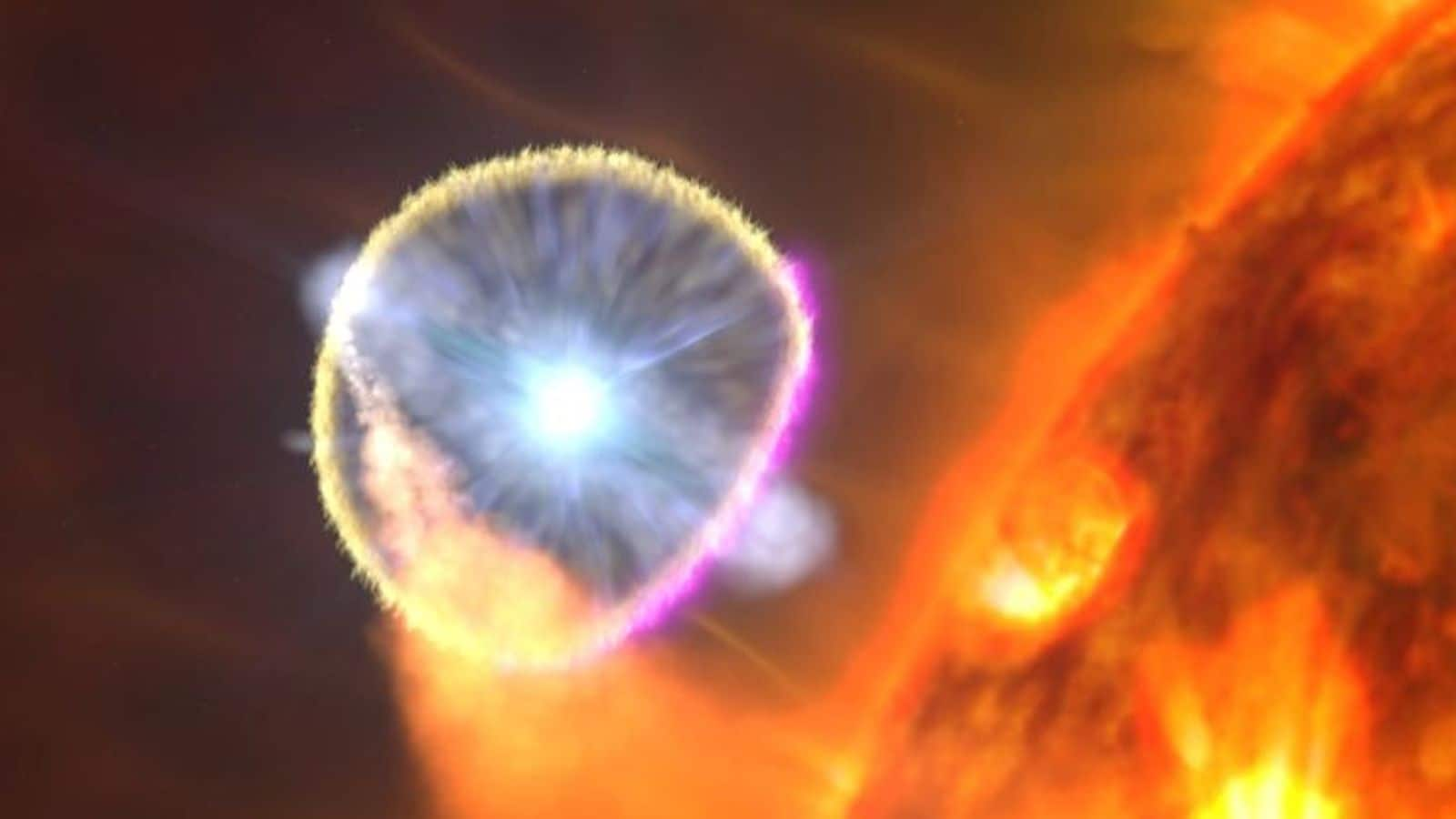
Star explosion to illuminate sky in once-in-a-lifetime event in 2024
What's the story
For the first time in 80 years, a rare celestial event is set to occur in our Milky Way galaxy.
The T Coronae Borealis star system is expected to nova, a phenomenon that happens when a small star suddenly brightens dramatically for a short period.
"Seeing that star blow up is much rarer than a solar eclipse," NASA astronomer Bill Cooke told NPR. "So it's kind of a once-in-a-lifetime thing."
Star system
Understanding the T Coronae Borealis
T Coronae Borealis, located about 3,000 light-years from Earth, is a binary star system containing a white dwarf and a red giant.
As the red giant heats up and pressure grows, it will start spewing matter collected by the white dwarf.
The smaller star, the size of Earth, will get so overloaded with that matter that it shall explode.
"Eventually it accumulates so much material that a thermonuclear reaction starts and the star brightens by hundreds of times," Cooke explained.
Nova
Nova events: A rare celestial phenomenon
The term nova is derived from Latin for "new star," as this event causes a once-dim celestial object to suddenly become illuminated.
Dr. Rebekah Hounsell, an assistant research scientist at NASA's Goddard Space Flight Center, said such explosions typically occur on the same star in repeated intervals.
"There are few recurrent novae with very short cycles, but we don't often see a repeated outburst in a human lifetime, and rarely one so relatively close to our own system," she said.
Brightness comparison
T Coronae Borealis's brightness to rival North Star
When the nova occurs, the star system could surge from a +10 magnitude to a +2, roughly the same level of brightness as North Star.
Astronomers say that once nova reaches its peak brightness, it will be visible to viewers for several days.
Those using binoculars will be able to see it for just over a week.
The last recorded outburst of T Coronae Borealis was in 1946, but there are historical records of sightings as far back as 1217.
Observation plans
NASA's telescopes to observe impending nova
Astrophysicists plan to closely observe the impending nova with the hope of better understanding these recurrent phenomena.
NASA's Fermi Gamma-ray Space Telescope and James Webb Space Telescope will be used to collect data on the eruption.
"Typically, nova events are so faint and far away that it's hard to clearly identify where the erupting energy is concentrated," said NASA Goddard chief of the Astroparticle Physics Laboratory Elizabeth Hays.